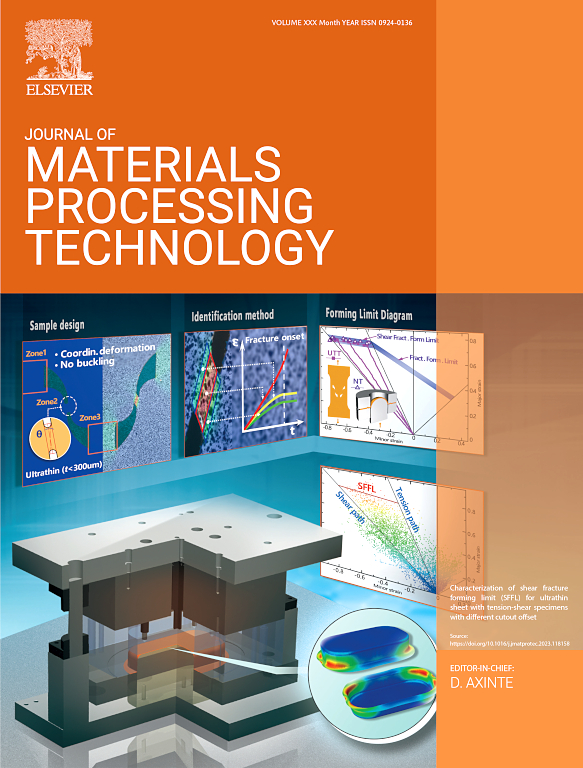Meshfree simulation and prediction of recrystallized grain size in friction stir processed 316L stainless steel
IF 6.7
2区 材料科学
Q1 ENGINEERING, INDUSTRIAL
Journal of Materials Processing Technology
Pub Date : 2025-01-31
DOI:10.1016/j.jmatprotec.2025.118751
引用次数: 0
Abstract
Friction stir processing (FSP) is a promising solid-phase microstructural modification technique that can repair and enhance damaged stainless steel surfaces exposed to harsh environments. The quality of the repaired material is closely correlated to the recrystallized grain size in the stir zone (SZ), which is influenced by the thermomechanical conditions dictated by FSP process parameters. Thus, establishing a reliable relationship between these parameters and recrystallized grain size in the SZ is crucial for optimizing repair quality. However, existing experimental approaches often rely on indirect temperatures measured far from the SZ, along with rough strain rate estimations, which are imprecise and time-consuming. Meanwhile, existing mesh-based modeling methods usually face numerical challenges when dealing with the large material deformations inherent in FSP. To address these issues, this study introduces a meshfree process model for FSP based on the smoothed particle hydrodynamics (SPH) method, aimed at predicting process conditions under different parameters. The model is validated using experimental data from 11 combinations of tool traverse and rotation speeds on 316 L stainless steel. Correlations between process parameters, material flow, temperature, strain, strain rate, and recrystallized grain size are revealed through SPH simulations and electron backscatter diffraction (EBSD) imaging. The results show that in situ SZ temperatures range from 1071 to 1322°C, which exceed the tool temperature by over 300°C. Furthermore, SZ temperature, strain rate, and grain size increase monotonically with higher tool temperature and faster traverse speed. A relationship is then established between the model-predicted Zener-Hollomon parameter and the recrystallized grain size based on EBSD data, expressed as . This relationship exhibits satisfactory accuracy with errors of less than 26.9% in predicting grain sizes at various SZ locations, which offers valuable insights for optimizing FSP repair processes for 316 L stainless steel.
求助全文
约1分钟内获得全文
求助全文
来源期刊

Journal of Materials Processing Technology
工程技术-材料科学:综合
CiteScore
12.60
自引率
4.80%
发文量
403
审稿时长
29 days
期刊介绍:
The Journal of Materials Processing Technology covers the processing techniques used in manufacturing components from metals and other materials. The journal aims to publish full research papers of original, significant and rigorous work and so to contribute to increased production efficiency and improved component performance.
Areas of interest to the journal include:
• Casting, forming and machining
• Additive processing and joining technologies
• The evolution of material properties under the specific conditions met in manufacturing processes
• Surface engineering when it relates specifically to a manufacturing process
• Design and behavior of equipment and tools.
 求助内容:
求助内容: 应助结果提醒方式:
应助结果提醒方式:


